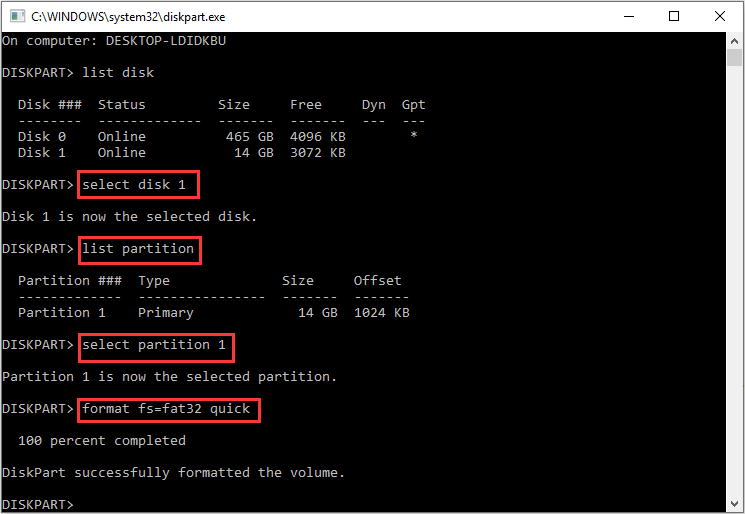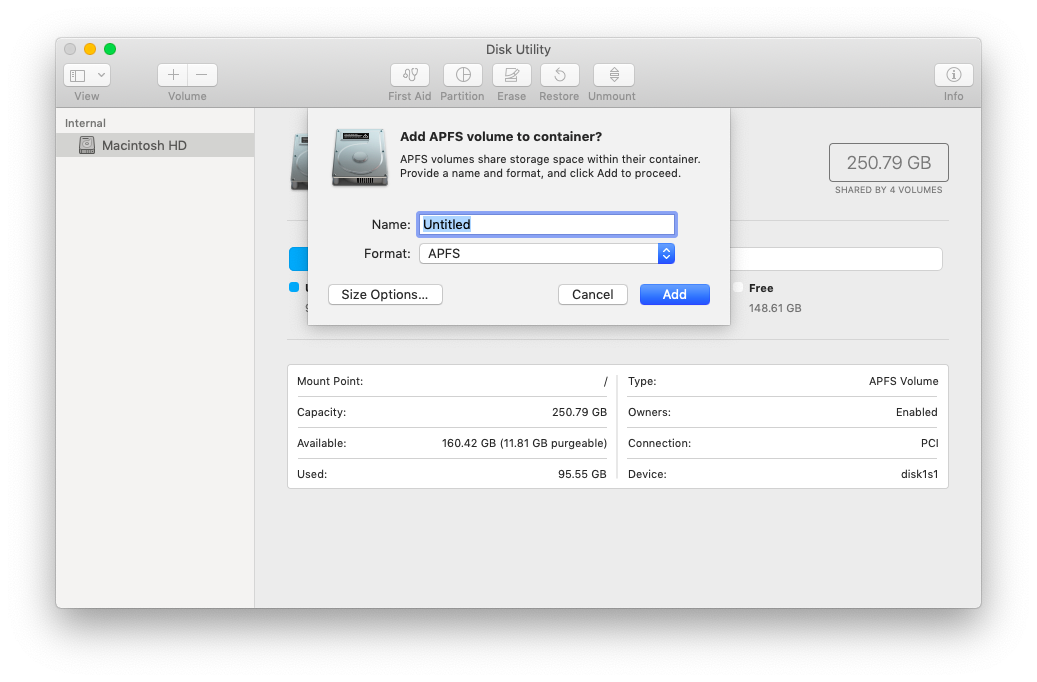Most of the time I deliver finished photos and videos to my clients via digital download. It’s quick, easy and saves me time and money by avoiding the hassle of uploading files to a physical storage device and sending it in the mail.
- How To Format Flash Drive To Fat32 Using Mac
- Fat32 Formatter Mac
- Usb Drive Format Fat32 Mac
- Format Flash Drive On Mac To Fat32
- Format Flash Drive To Fat32 Windows 10
- How To Format Fat32 Mac
- Format Flash Drive To Fat32 On Mac
However, it is occasionally necessary to copy photography and videos to a USB flash drive for delivery to a client (some clients don’t have reliable high speed internet, some want a physical product, some don’t have a reliable PC and some are just not tech savvy enough to figure out how to download a large number of files from a link).
One issue that I have started to run into – especially with longer or 4K video – is transferring files larger than 4 GB to a USB flash drive.
Fortunately, the solution is relatively easy – here is how to copy files larger than 4 GB to a USB flash drive, memory card or other FAT32 storage device.
The Problem

Most USB flash drives (and memory cards) come pre-formatted with the FAT32 file system. While this is fine for day to day use, one key limitation of the FAT32 file system is that you cannot save individual files that are over 4GB in size.
Most USB flash drives on sale are designed to work with Windows operating systems that run on Fat32. Mac devices on the other hand run on either Mac OS Extended or APFS. If your drive is an APFS format or a Mac OS format you can format your drive easily but if it is a FAT32 format this may be a problem.
However, a USB drive formatted to FAT32 doesn't support an individual file larger than 4GB. ExFAT, the successor of FAT32, offers larger storage space and supports files larger than 4GB. So, if you need to transfer large files between PCs and Macs, ExFAT will be the best format for your USB drive. 3 How to Format a USB Drive on Mac. How to Format a Flash Drive on Mac Before you proceed with formatting your flash drive, you should first consider which format you are going to use. Selecting the correct format is crucial as it will have an impact on its compatibility with your Mac. If you need to format large partition, such 64GB or 128GB partition to FAT32 or format the second partition on SD card/USB flash drive, you can turn to AOMEI Partition Assistant Standard, a comprehensive and all-round USB FAT32 format tool for Windows operating system. It can help you to complete these operations quickly and simply. Some flash drives have to be formatted first before you can store files on them. In this article, we are taking a closer look at the Disk Utility, which comes with all recent versions of the Mac OS X operating system and how you can use it to format USB drive on Mac. Format Flash Drive Mac with Disk Utility. Your Mac computer comes with a handy.
Back in 1995 when the FAT32 file system was introduced, this wasn’t much of a problem – nobody had 4GB files! However, with 4K video, longer HD videos or ProRes / DNxHD video clips, exceeding that 4GB file size limit isn’t too hard to do.
If you try to copy a file that is larger than 4GB to a USB flash drive with the default FAT32 file system, you will get an error saying that there is not enough space to copy the file (even if its say a 6GB file being copied onto a 64GB USB flash drive with lots of room to spare).
The Solution
To solve this problem, all you need to do is format your USB flash drive with the exFAT file system.
exFAT has no file size limitations and is compatible across most modern devices including both Windows and macOS (although there may be some compatibility issues with older devices).
To format your USB flash drive with the exFAT file system: select the USB drive you want to format from your file explorer, right click and select “Format”, then in the format dialogue, choose exFAT under the File System drop down menu.
Warning! This will delete everything on the drive you are formatting, so make sure you have selected the correct drive and that you don’t have any critical data saved that you don’t want to lose.
If you are working in a strictly Windows environment, you could also format your USB drive to NTFS, but exFAT is more compatible across platforms and is specifically optimized for flash drives.
If you’re interested, here is a great article that explains the difference between FAT32, exFAT and NTFS.
How to format USB to FAT32? If the USB flash drive is within 32GB, the native Windows File Explorer and Windows Disk Management are good FAT32 formatter. However, if you want to format 64GB or 128GB USB to FAT32, you can only depend on CMD (Usually diskpart and powershell) and a third-party FAT32 format tool.
*EaseUS Partition Master Free is an all-around FAT32 format utility that breaks the limit of the 32GB capacity on a USB flash drive, pen drive or memory card. You can apply the software to format any drive from 2GB to 256GB or even bigger to FAT32 without limitation. Read on and get to know the FAT32 file system and how to choose the right tool to format USB to FAT32.
Why Do We Format USB to FAT32?

Related topic:Should you format USB to FAT32 or NTFS?

What's FAT32? FAT32 is regarded as the default file system for external drives, especially the removable USB flash drives and SD memory cards. It's the most compatible file system that can be used on major devices and operating systems like Windows and macOS. So, the advantage of using FAT32 is portability.
However, FAT32 has some disadvantages, or let's say limitations as well. First and foremost, if you use a single file over 4GB in size, you'll need to convert FAT32 to NTFS or exFAT; What's more, due to the manufacturers' specifications, FAT32 can only be used to format drives between 2GB and 32GB, and that's why native tools on Windows have that limit, too. When you try to format a USB drive over 32GB in Windows Explorer, there is no 'FAT32' option at all.
- Warning
- Formatting the USB flash drive will delete all the content on the device. Please make sure that you have backed up everything on the drive you want to save before the operations.
How to Format USB to FAT32: Windows Tools or Third-party Formatter?
According to the previous FAT32 analysis, 32GB is the watershed when it comes to deciding how to format your USB flash drive to the FAT32 file system. In a word, when the USB drive is within 32GB, you can choose any tool mentioned on this page to make it. Otherwise, once the USB drive capacity exceeds the 32GB limit, you'll need to turn to more advanced solutions, including:
- 1. EaseUS FAT32 formatting software
- 2. Diskpart & PowerShell command
Next, we'll cover all free solutions to let you format 2GB, 8GB, 32GB, 64GB, 128GB, or 256GB USB flash drive to FAT32 with success.
#1. Format USB (Under 32GB) to FAT32 via Windows 7/8/10 File Explorer
Connect your USB drive to a Windows PC or laptop and let Windows recognize your drive and assign it a drive letter. Check it in Windows Explorer and follow the steps to format the drive to FAT32 as you want.
Step 1. Press Windows + E keys and open File Explorer.
Step 2. Right-click on your USB drive and choose Format.
Step 3. Choose FAT32 as the target file system, tick Quick Format and click Start.
#2. Format USB (Under 32GB) to FAT32 via Windows 7/8/10 Disk Management
Disk management is a free Windows built-in utility that is designed to help users deal with common disk partition related jobs. It is ready to help whenever you want to format a small USB drive to FAT32.
How To Format Flash Drive To Fat32 Using Mac
Step 1. Right-click This PC in Windows 10/My Computer in Windows 7, and choose Manage.
Step 2. Choose Disk Management under Storage.
Step 3. Right-click on your USB drive and select Format.
Step 4. From the File system drop-down list, choose FAT32 and click OK.
#3. Format USB (32GB, 64GB, 128GB) to FAT32 with EaseUS FAT32 Formatter
Since the FAT32 option is not available in the regular Windows formatting tools when the USB size is over 32GB, you need other capable USB format tools to get around that. Here we recommend you try EaseUS Partition Master Free, a free partition manager that can help you format your hard drive and USB devices without size limitations. In addition, it also lets you easily resize, create, delete, merge, split, copy partitions, convert MBR to GPT drive and vice versa, and many other things you cannot realize in the default Windows programs.
Now you can download the program and follow the simple steps to format the USB flash drive in any size to FAT32.
Fat32 Formatter Mac
Step 1: Launch EaseUS Partition Master, right-click the partition you intend to format and choose 'Format'.
Step 2: In the new window, enter the Partition label, choose the FAT32 file system, and set the cluster size according to your needs, then click 'OK'.
Step 3: Then you will see a warning window, click 'OK' in it to continue.
Step 4: Click the 'Execute Operation' button in the top-left corner to review the changes, then click 'Apply' to start formatting the partition to FAT32.

Usb Drive Format Fat32 Mac
Smaller cluster size makes less waste of disk space. The smaller cluster size is, the bigger the file allocation table (FAT) will be. The bigger the FAT is, the slower the operating system works with the disk.
#4. Format USB to FAT32 Using CMD
Though Windows Command Prompt is the other attainable way that enables users to format a storage device to whatever file system, it's kind of higher-leveled and risker for average persons.
If you are with solid computer skills and familiar with the command lines, you can try the diskpart and powershell command to format your USB drive to FAT32 like the third-party EaseUS format tool does.
Diskpart Command Line:
list disk
select disk *
list volume
select volume *
format fs=ntfs quick
Format Flash Drive On Mac To Fat32
PowerShell Command Line:
Format Flash Drive To Fat32 Windows 10
format /FS:FAT32 X:
Are You Able to Format USB to FAT32 Now?
How To Format Fat32 Mac
Regarding the topic 'how to format USB to FAT32', we analyzed the FAT32's advantage and disadvantage, and clearly know that the regular Windows File Explorer and Windows Disk Management can only deal with the USB drive under 32GB. If you're trying to format a large USB drive that is 64GB or 128GB, you'll need to download the third-party formatting software - EaseUS Partition Master Free, or challenge yourself to learn the Diskpart or PowerShell commands.
Format Flash Drive To Fat32 On Mac
All in all, no matter how large your USB flash drive is, EaseUS FAT32 format software is the optimal choice to format your USB drive to FAT32. It doesn't require the USB storage size, and most of all, it's user-friendly that everyone can benefit from it.